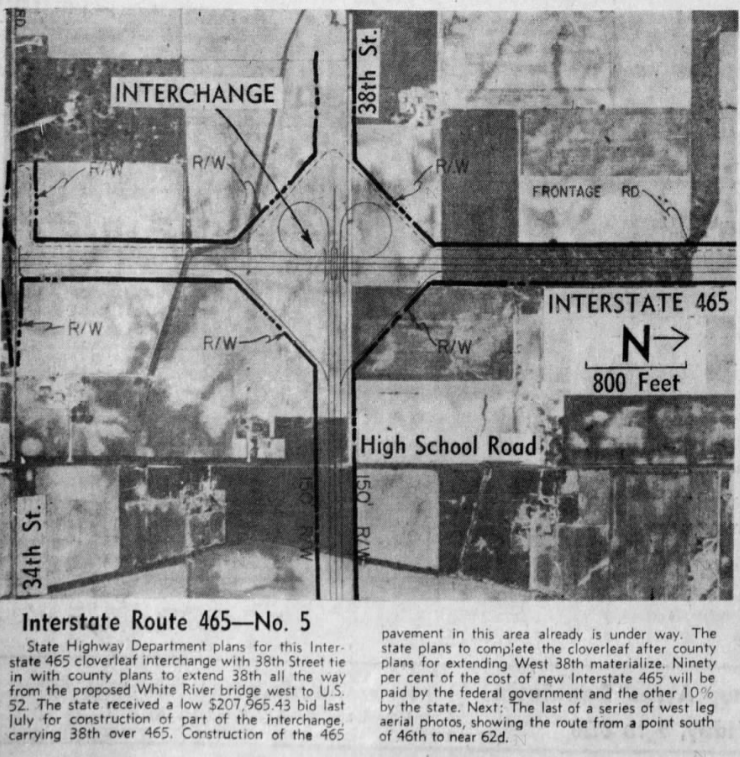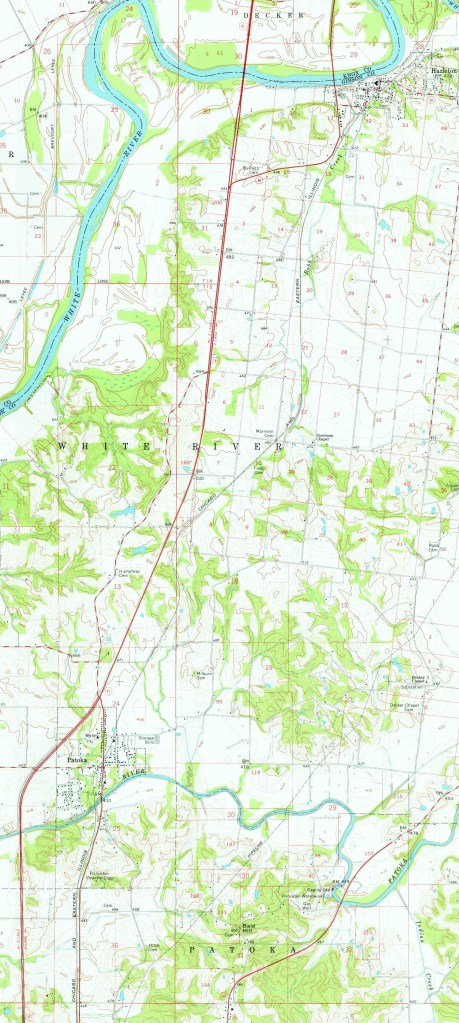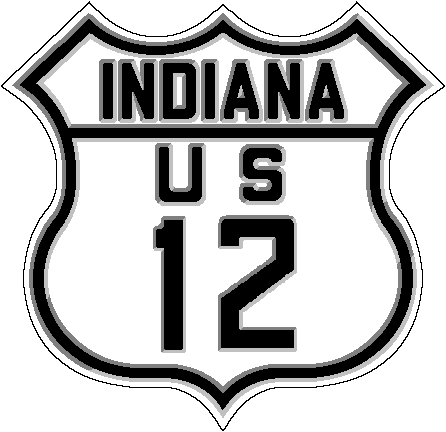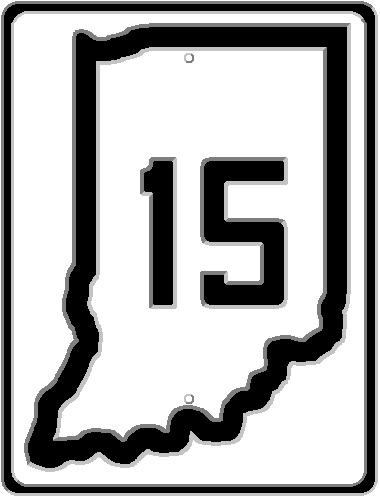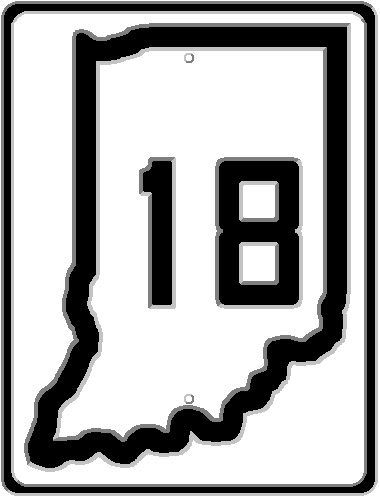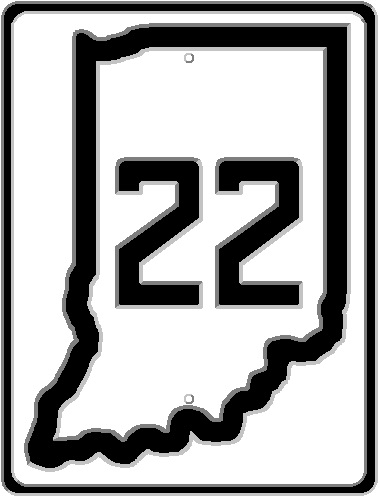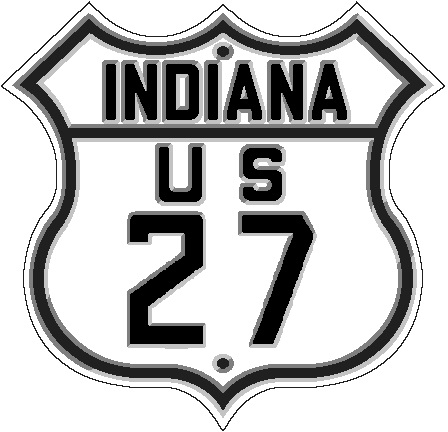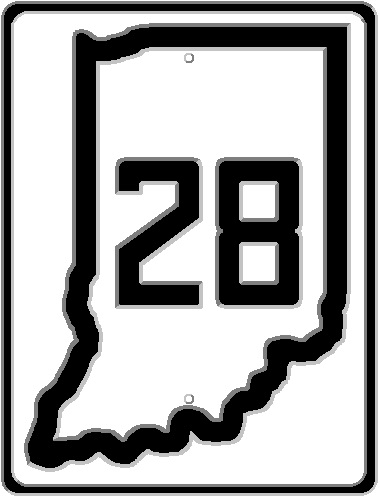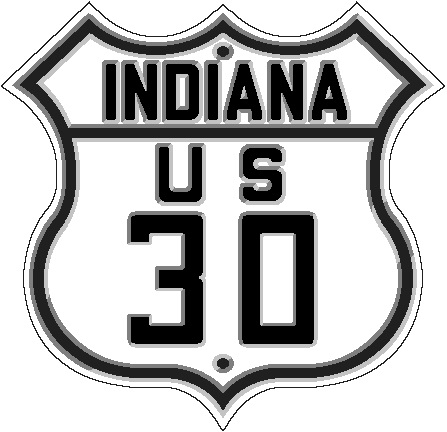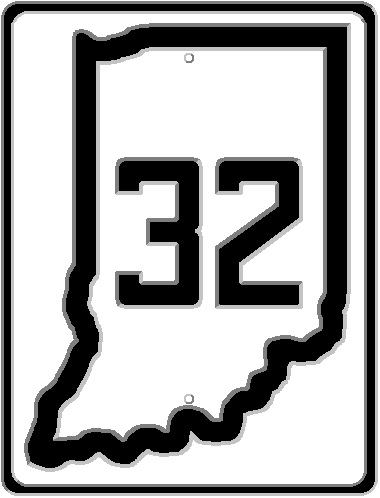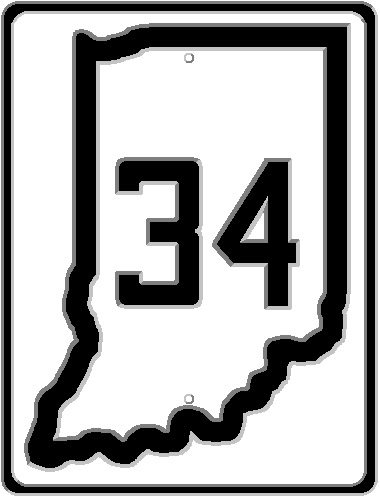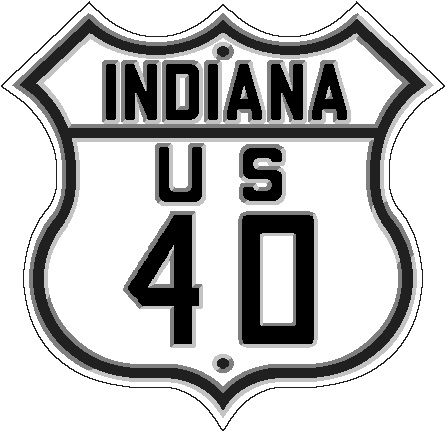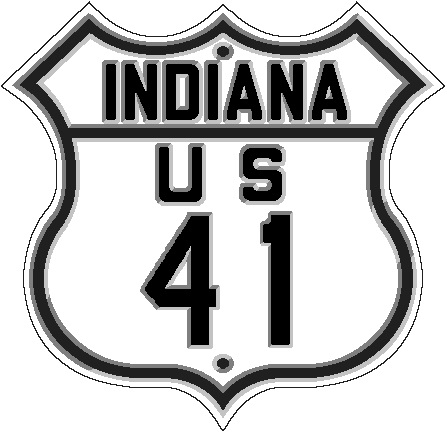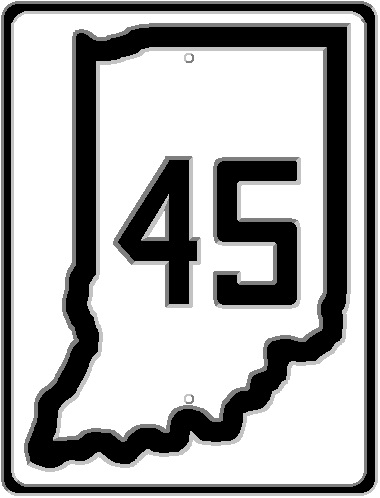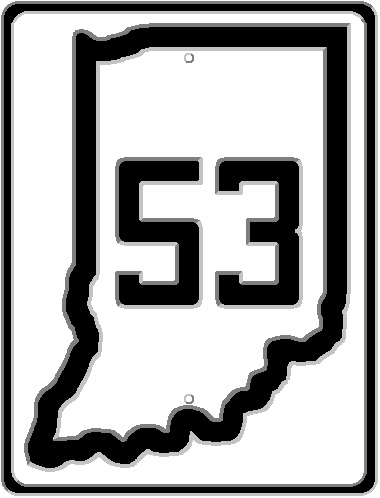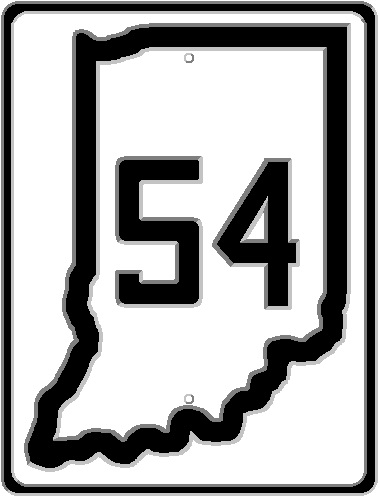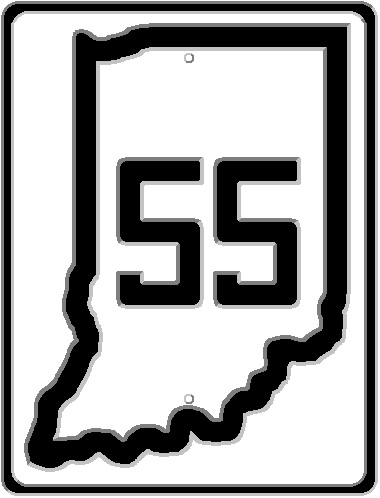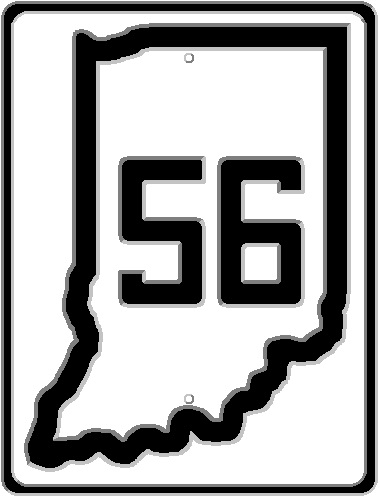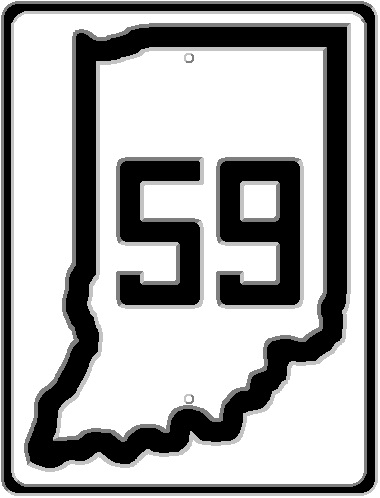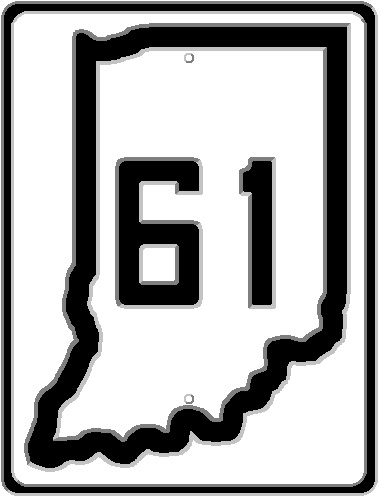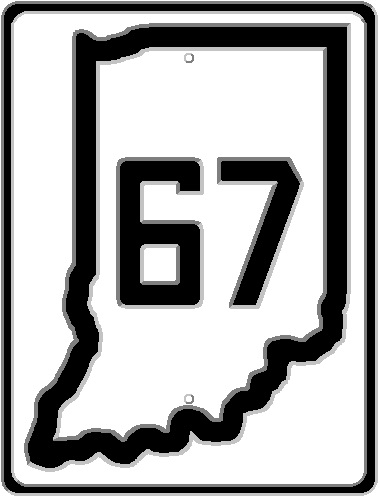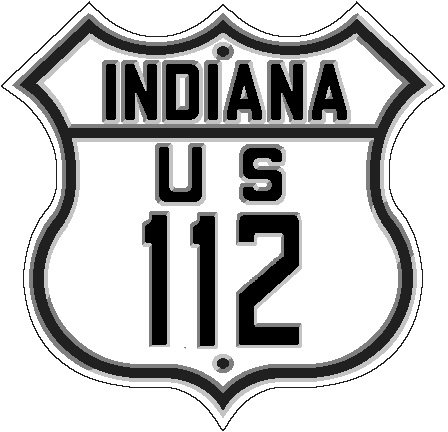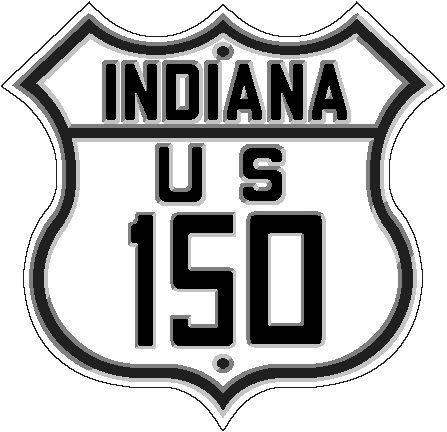I have posted much about the creation of the Indiana State Highway Commission. As of the posting of this article, the age of the Commission is either 103 or 101 years old. The original ISHC was established in 1917…but met with a lot of problems. It was finally nailed down in 1919 and made permanent.
This also creates a dating problem when it comes to the state highways. The first five state highways, then known as Main Market Roads, were established in 1917 with the original ISHC. Two of those original Main Market Highways connected to Indianapolis. The original National Road had been given the number Main Market Road 3. The Range Line Road, connecting Indianapolis to Peru, and through further connections, to South Bend, was given the Main Market Road 1 label.
When it was finally established, the ISHC changed the name of the Main Market Road to State Road, in keeping with other states surrounding Indiana. The markers used along the roads, painted onto utility poles like the old Auto Trail markers were, resembled the image to the left…the state shape with the words “STATE ROAD” and the route number. In this case, as of 1920, State Road 2 was the original route of the Lincoln Highway through northern Indiana.
The state highway system was designed to, eventually, connect every county seat and town of over 5,000 population, to each other. Indianapolis, as the state capital and the largest city in the state, would have connections aiming in every direction. Most of those roads marked with the original numbers would still be state roads into the 1970s and early 1980s, before the Indiana Department of Highways started removing state roads inside the Interstate 465 loop…and INDOT finishing the job on 1 July 1999. These road were removed for state statutory limitation reasons, and I have discussed that in a previous blog entry. So I won’t do it here.
The original state road numbers that came to Indiana varied greatly, as did their directions. There were no set rules when it came to state road numbers. They were assigned as they came…and stayed that way until the first renumbering of 1923, or the Great Renumbering of 1926.
Let’s look at the original state roads in Marion County, some of which actually did not reach Indianapolis itself.
State Road 1: As mentioned before, State Road 1 was originally called Main Market Highway 1. North of Indianapolis, it followed the Range Line Road, a local Auto Trail, through Carmel, Westfield, to Kokomo and points north. The route north followed Meridian Street north to Westfield Boulevard, then Westfield Boulevard on out to Carmel and beyond. In Carmel, the old road is still called Range Line Road, and serves as the main north-south drag through the town, as it does in Westfield.
South of Indianapolis, State Road 1, like its Main Market Highway predecessor, followed the old Madison State Road out of the city to Southport, Greenwood, Franklin and Columbus. The original SR 1 route is still able to be driven through the south side of Indianapolis, with the exception of the section replaced in the 1950s by the Madison Avenue Expressway. But Old Madison Avenue exists, if you can find your way back there.
While the entirety of original State Road 1 became US 31 with the Great Renumbering, bypasses in Marion County were put in place very early. The northern section, through Broad Ripple, and Carmel was replaced as early as 1930. The southern section, including the Southport/Greenwood bypass, was put in place in the 1940s.
State Road 3: As mentioned above, Main Market Highway/State Road 3 followed the National Road through Marion County. One exception to this is the section of the 1830s National Road that crossed the White River downtown. That section of the old road was removed in 1904 with the demolition of the National Road covered bridge and its replacement with a new, and short lived, Washington Street bridge. With a couple of exceptions other than that (the Bridgeport straightening of the early 1930s, and the new Eagle Creek bridge built in the late 1930s), the old road was followed very accurately until the mid-1980s with the creation of White River State Park. The successor to original SR 3, US 40, was moved to make room for the park. Both US 40 and US 31 lost their designations on 1 July 1999 with the removal of those two routes inside the I-465 loop.
State Road 6: This old state road was a through route when it came to Marion County. From the north, it followed the route of the original Indianapolis-Lafayette State Road from Lebanon. After passing through downtown Indianapolis, it left the county using the original Michigan Road on its way to Shelbyville and Greensburg. The original State Road 6 followed the Michigan Road Auto Trail, not the Historic Michigan Road, meaning it still went to Madison, but it went by way of Versailles, which the historic road did not. With the Great Renumbering, the northern SR 6 became US 52, while the southern SR 6 became SR 29 – later to be renumbered again to US 421.
State Road 22: This road, as it was originally laid out, only lasted from 1920 to 1923. Out of Indianapolis, it followed the old Mooresville State Road through southwestern Marion County. It was designated the original route from Indianapolis to Martinsville, as described in this blog entry. This road will be discussed again a few paragraphs from now.
State Road 39: Another 1830s state road that was taken into the Indiana State Highway Commission’s custody in 1919. This road followed the old Brookville State Road from the National Road out of the county through New Palestine to Rushville and Brookville. The original end of that road, both the 1830s original and the 1919 state highway, is discussed here. The road would become, in October 1926, the other section of US 52 through Indianapolis. It would also eventually become the first state highway removed inside the I-465 loop in Marion County. And even then, it would be rerouted in the late 1990s to go the other way around the county.
That covers the 1919 highways. More would come to Marion County before 1923.
State Road 12: Originally, this road, north of Martinsville, was the old State Road 22 mentioned above. When a new SR 22 was created, the SR 12 number was continued from Martinsville to Indianapolis along the old Vincennes and Mooresville State Roads. This road, in October 1926, would become part of the new State Road 67.
State Road 15: While the southern route of the Michigan Road was State Road 6, the northern part, heading off to Logansport, was added later and given the number State Road 15. The entire route of the historic Michigan Road would never become a state highway, but major sections did…although late in the creation of the state highway system. With the Great Renumbering, this road became SR 29, and in 1951, redesignated, like its southern half, US 421.
State Road 22: Here we go again. State Road 22 was given to the route between Indianapolis and Paoli. In 1919, that included the route along the west bank of the White River from Martinsville to Indianapolis along the Mooresville Road. This was changed by 1923 to keep SR 22 on the east side of White River, where it followed the old Paoli State Road, and the Bluff Road, through Waverly to the south edge of downtown Indianapolis at Meridian and South Streets. This was one of the routes of the Dixie Highway through Indianapolis, and would later become part of SR 37 in 1926.
State Road 31: In 1920, when this road was originally created, it turned south to connect to the National Road west of Plainfield. It had followed the Rockville Road from Montezuma to Danville, then turned southeasterly to meet State Road 3. By 1923, the road was moved from what would later become part of what is now SR 39 to continuing on the Rockville Road into Marion County. State Road 31 would meet the National Road outside the city limits of Indianapolis at what is now the intersection of Holt Road and Washington Street. It would become US 36 before it was extended along the new section of what is now Rockville Road to the intersection at Eagle Creek with Washington Street.
State Road 37: One of two state road numbers that still served Indianapolis after the road numbers were changed in October 1926 (the other being State Road 31). The original State Road 37 left Marion County in a northeasterly direction on its way to Pendleton, Anderson and Muncie. Inside the city limits, the street name was Massachusetts Avenue. When it reached the city limits, the name of the road changed to Pendleton Pike. This still occurs today, with the name change at the old city limits at 38th Street. In October 1926, the number of this road would change to State Road 67.
There were two other major state roads in Marion County, but they weren’t part of the state highway system until after the Great Renumbering. One was the Crawfordsville State Road, part of the original Dixie Highway, connecting Indianapolis to Crawfordsville via Speedway, Clermont, Brownsburg, and half a dozen other towns. It would be added to the state highway system by 1929 as State Road 34. The number would change later to US 136.
The other road was the original Fort Wayne State Road, also known as the Noblesville State Road, but even more commonly called the Allisonville Road. It would be added to the state highway system in 1932 as State Road 13. Less than a decade later, its number would be changed to the more familiar State Road 37.






